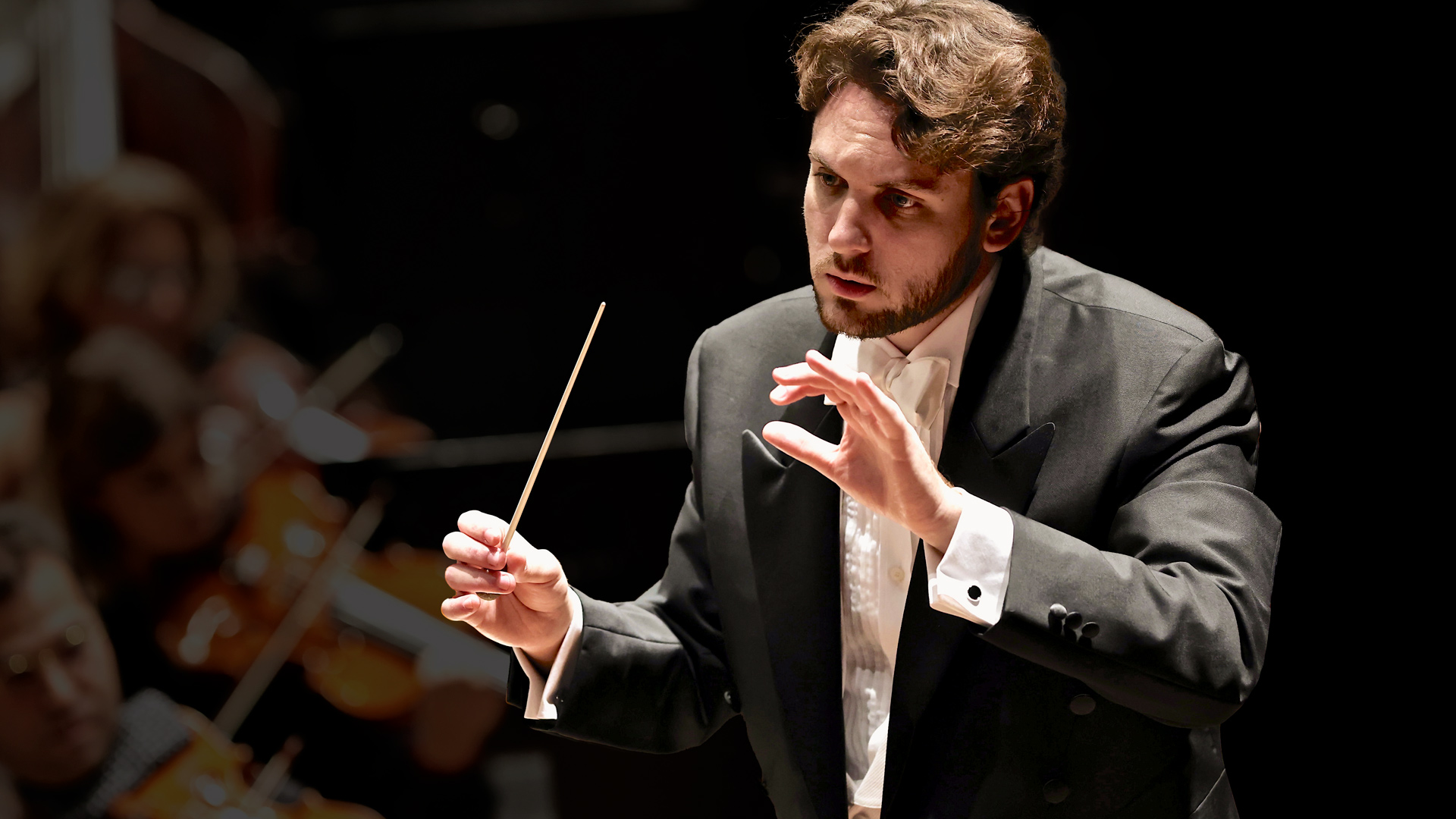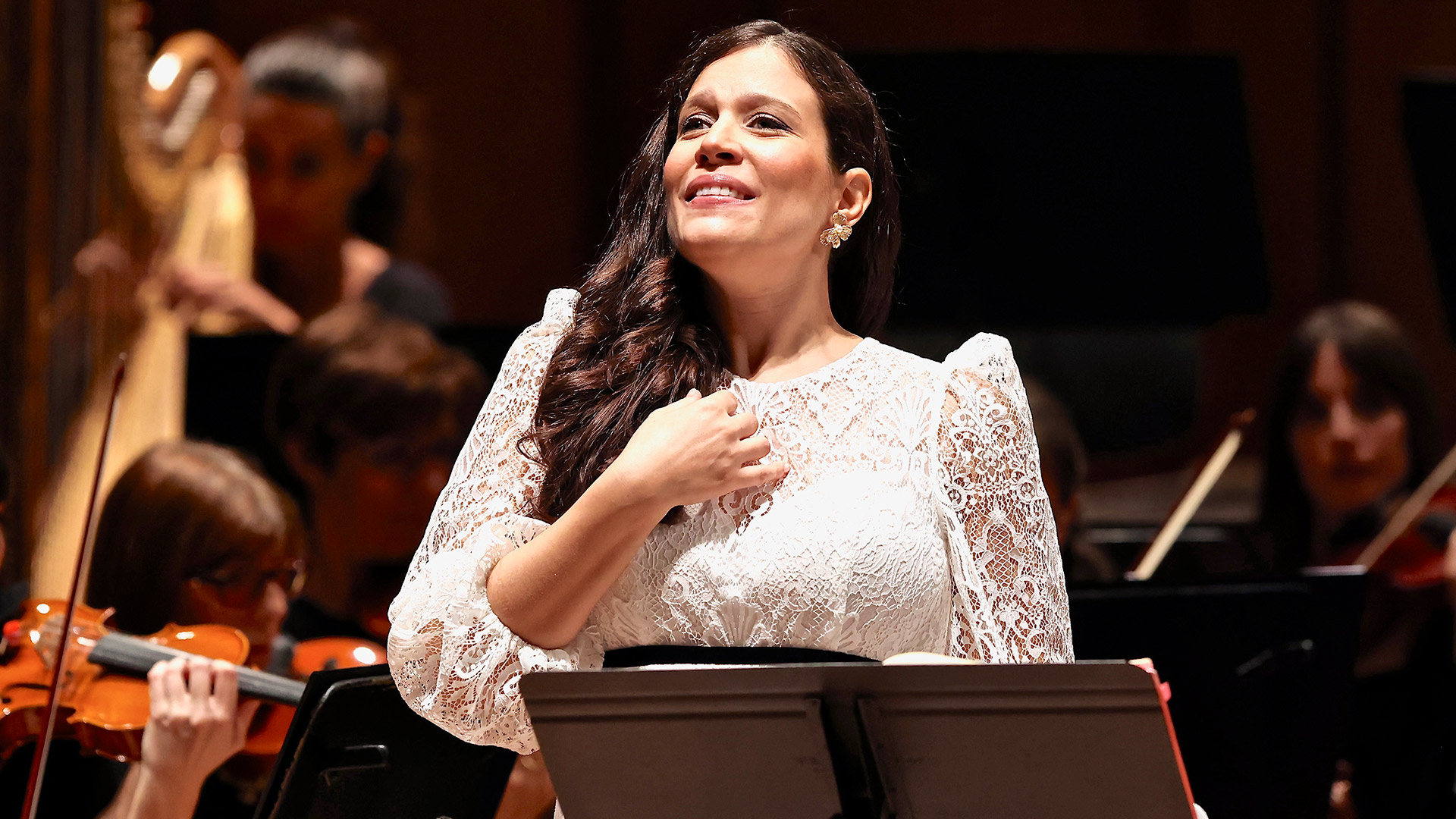MARIO CASTELNUOVO-TEDESCO
Concertino for harp and orchestra
(first performance of the new edition)
OTTORINO RESPIGHI
Deità silvane P. 147
FELIX MENDELSSOHN-BARTHOLDY
Symphony No. 4 in A major Italian op. 90
Harp
Ieuan Jones
Soprano
Francesca Dotto
Conductor
Davide Massiglia
Opera Carlo Felice Genova Orchestra
A Bridge of Music is an international cultural project conceived by Superintendent Claudio Orazi in 2016 with the aim of enhancing music as a driver of cultural diplomacy between Italy and the United States. 2025 will mark the bicentenary of the performance of the first Italian opera in the United States (Il barbiere di Siviglia, November 1825). In view of the celebrations for this significant date and after the success of the dedicated programme in 2023, the Opera Carlo Felice proposes a 2024 tour that opens in Genoa with a concert conducted by Davide Massiglia, to continue across an ideal bridge to New York, where Donato Renzetti – director emeritus of the Theatre -, the Opera Carlo Felice Orchestra and the violinist Giuseppe Gibboni (winner of the 56th Paganini Prize) will be the protagonists of a concert on a double date (Tuesday 8th and Wednesday 9th October at 8 pm. 00 at Saint Patrick’s Old Cathedral) dedicated to Lorenzo Da Ponte and Niccolò Paganini with music by Mozart and Paganini.
The musical programme of the A Bridge of Music Genova concert juxtaposes the works of Mario Castelnuovo-Tedesco and Ottorino Respighi, unique 20th century Italian composers with deep ties to the USA, with Felix Mendelssohn’s Sinfonia Italiana.
In the opening, the Concertino for harp and orchestra op. 93 that Mario Castelnuovo-Tedesco – a Florentine composer who emigrated to New York and later to Los Angeles to escape racial laws in 1939 – composed in 1938. Castelnuovo-Tedesco’s catalogue includes several concertos for solo instrument and orchestra, a genre akin to his sensibility (with a particularly intense production in the 1930s, to which date the Concerto No. 2 for violin, the Concerto for cello, and the famous Concertos No. 1 for guitar and No. 2 for piano composed in New York). A common characteristic of these compositions is the refinement of the timbral research, which always results in a mixture of intense and expressive colours. The Concertino for harp and orchestra follows the pattern adopted in other concerts of the same period, and is divided into three movements: Moderato, Andante and Spanish Finale. Each of the three is broadly evocative and characterful, moving from the more varied and at times mysterious tones of the first movement to the persuasive passion of the second and the Spanish-style celebration of the finale. A fascinating aspect of Castelnuovo-Tedesco’s approach is the use of the harp not so much with a view to a dialogue with the orchestra – as is often the case in this genre – but more as a load-bearing element of the overall sonority; the principle of contrast between solo and tutti is thus dispensed with in virtue of a symbiosis of timbre within which the harp determines the expressive dimension of the whole.
Ottorino Respighi composed Deità silvane – a collection of five lyrics on texts by Antonio Rubino – in 1917, in an initial version for voice and piano. Several years later, coinciding with his first trip to New York in the company of his wife and singer Elsa, the composer produced a new version of the collection, this time for soprano and small orchestra, which was premiered at the Aeolian Hall in February 1926. With Deità silvane Respighi proposes a personal reading, in a twentieth-century key, of the Romantic love for the archaic – which can be found not only in the almost nineteenth-century taste of the poems by Rubino (1880-1964, an eclectic artist, mainly draughtsman, of San Remo origin), but also in the musical choices that recall similar operations by Debussy and Ravel. The five lyrics I fauni, Musica in horto, Egle, Acqua and Crepuscolo, whose texts represent naturalistic suggestions with some mythological references, have the immediate sonority of true portraits in music. Respighi’s style was not directly influenced by the European avant-gardes of the early 20th century, the composer moving more towards a reworking of the language of the late 19th century rather than breaking with it. This quest is in a certain sense akin to that of Castelnuovo-Tedesco and the American artistic sensibility, where the works of both were particularly appreciated.
Felix Mendelssohn’s Symphony No. 4 is called ‘Italian’ precisely because it was composed during a stay in Italy between 1830 and 1831. The Symphony, which within the composer’s catalogue represents a special synthesis of classicism and romanticism, was first performed under Mendelssohn’s own baton at the London Philharmonic Society, and was immediately a great success, establishing itself as one of his best-loved titles. Its character is lively, bright and singable as showed by the initial Allegro. The same Andante, the “less Italian” movement, does not lean towards melancholy and develops into a a lyric-dreamy character instead. Similarly to the Classical minuet, the third movement recalls a pastoral atmosphere with the horns and bassoons as protagonists. The lively final Saltarello is the most direct reference to Italian musical culture, in particular to Roman folk music (the composer spent more time in Rome and Naples).

